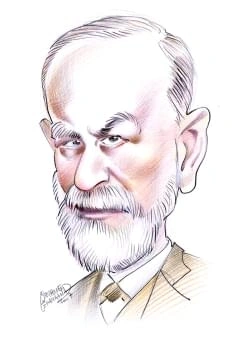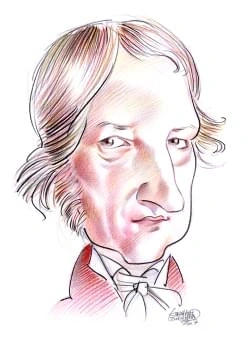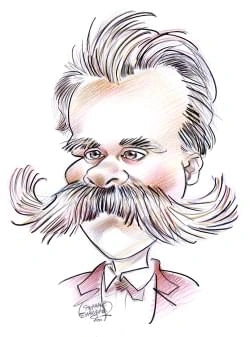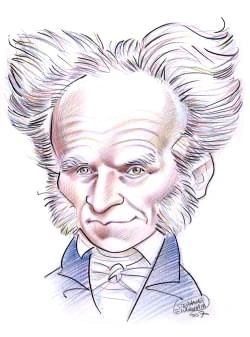439 résultats pour "largest"
-
Montréal - geography.
requires children of immigrants to be educated in French. As a result, French-language schools became increasingly multiethnic. With four universities, Montréal is one of the leading centers of higher education in Canada. There are two English-language institutions: McGill University (1821) andConcordia University (1974). Their French-language counterparts are the Université de Montréal (1876) and the University of Québec at Montréal (1969). Both private andstate universities are funded by the p...
-
Denver - geography.
Denver is the center of professional sports in the Rocky Mountain region. Major league teams are the Denver Broncos (football), Colorado Rockies (baseball), DenverNuggets (basketball), and Colorado Avalanche (ice hockey). Coors Field (opened in 1995) is the home of the Colorado Rockies. The Broncos began play at the newlyconstructed Invesco Field at Mile High in 2001, and the Nuggets and Avalanche play at the Pepsi Center. The National Western Stock Show and Rodeo, one of thelargest such shows i...
-
Smithsonian Institution.
F Arthur M. Sackler Gallery The Arthur M. Sackler Gallery houses a permanent collection of art from China, South and Southeast Asia, ancient and Islamic Iran, and Japan. Changing exhibitions ofAsian art are drawn from collections in the United States and abroad. The core of the collection was a gift from American research physician and medical publisherArthur M. Sackler. G Cooper-Hewitt, National Design Museum The Cooper-Hewitt is located in New York City and features examples of historical an...
-
Trinidad and Tobago - country.
III PEOPLE The history of Trinidad and Tobago is reflected in the makeup of its population, among the most ethnically diverse in the Caribbean. Blacks of African ancestry andAsians of Indian ancestry each make up about 40 percent of the population. The remainder is mainly of mixed ancestry, although there are also small groups of peopleof Chinese, European, South American, and Middle Eastern descent. The ethnic diversity of Trinidad and Tobago owes its origins to slavery and its abolition. Afr...
-
Asteroid - astronomy.
Asteroids of the S type, related to the stony iron meteorites, make up about 15 percent of the total population of asteroids that can be seen from Earth. Much rarer arethe M-type objects, corresponding in composition to the meteorites known as “irons.” These objects are made up of an iron-nickel alloy and may represent the cores ofbodies that were large enough to differentiate into layers and to melt deep inside. Their rocky outer layers may have been removed by impacts with other asteroids . A...
-
New Orleans - geography.
D Metropolitan Region The New Orleans metropolitan region covers 8,800 sq km (3,400 sq mi) and includes the counties—known in Louisiana as parishes— of Orleans, Jefferson, Saint Bernard, Saint Charles, Saint John the Baptist, Saint Tammany, Saint James, and Plaquemines. At the center is the city of New Orleans, which is coextensive withOrleans Parish. It has a land area of 468 sq km (181 sq mi). Extending from this base are numerous suburban towns in the surrounding parishes. Metairie, Harahan...
-
Sydney (Australia) - geography.
blocks in the eastern suburbs and around railway stations elsewhere; and homes on large lots in the outer suburbs, especially those to the northwest. For publichousing, the state government built a number of high-rise apartment blocks in run-down inner suburbs after World War II (1939-1945). These housing projects weresoon deemed unsuccessful and were discontinued because they fostered crime and other social problems. More recently, public housing has taken the form of separateor semidetached ho...
-
Kenya - country.
threatens fish and other water life in the lake by depriving them of oxygen. Kenya is well known for its game parks—including Masai Mara Game Park and Tsavo National Park in the south, and Marsabit National Reserve in the north—whichattract large numbers of tourists and much revenue. Conservation of wildlife within reserves has thus received high priority. About 13 percent (2007) of Kenya’s totalland is protected. There are 229 (2004) threatened species in Kenya. Threatened habitats include the...
-
- Colosseum Colosseum, largest and most famous ancient Roman amphitheater.
-
Dolphin (aquatic mammal) - biology.
Scientists have observed dolphins displaying three types of caregiving behaviors: standing by, excitement, and supporting. In standing-by behavior, dolphins remain inthe vicinity of an injured or ill companion without offering aid. In excitement behavior, dolphins swim swiftly in circles around an injured dolphin, responding aggressivelytoward threats to the injured animal. For instance, they may bite harpoon lines or charge boats that come too close to the animal. In supporting behavior, one or...
-
Buenos Aires (city) - geography.
The city has produced or nurtured many of the most prominent Spanish-language writers of the 20th century, including Jorge Luis Borges, Julio Cortázar, and ManuelPuig. Buenos Aires has long been one of the primary centers of Spanish-language publishing and printing, and it is home to major publishing companies. It supports theoldest English-language daily newspaper in Latin America, the Buenos Aires Herald, published since 1876. The arts have a long, rich history in Buenos Aires. This is mani...
-
Hong Kong - geography.
higher than China’s average standard of living. In 2006 Hong Kong’s per capita gross domestic product (GDP) was $27,679.20, although much of the wealth isconcentrated into relatively few hands. IV ECONOMY Hong Kong’s position as one of the world’s most important economic centers is based on several factors. It is located midway between Japan and Singapore, and it liesastride the main shipping and air routes of the western Pacific. It also has long served as a major port of entry and trade for...
-
Algebra
I
INTRODUCTION
Algebra, branch of mathematics in which symbols (usually letters) represent unknown numbers in mathematical equations.
B Order of Operations and Grouping Algebra relies on an established sequence for performing arithmetic operations. This ensures that everyone who executes a string of operations arrives at the sameanswer. Multiplication is performed first, then division, followed by addition, then subtraction. For example: 1 + 2 · 3 equals 7 because 2 and 3 are multiplied first and then added to 1. Exponents and roots have even higher priority than multiplication: 3 · 2 2 = 3 · 4 = 12 Grouping symbols override...
-
Cyprus - country.
40,000 cubic meters (1.4 million cubic feet) of salt water into fresh water per day, opened at Dhekelia in 1997, and a second larger plant opened at Larnaca in 2001. III PEOPLE OF CYPRUS The combined population of the Greek and Turkish sectors (2008 estimate) is 792,604. The overall population density is 86 persons per sq km (222 per sq mi). About69 percent of the island’s inhabitants live in urban areas. Greek-speaking Cypriots make up approximately 85 percent of the population. About 12 perc...
-
Lebanon (country) - country.
during the civil war. Within the country, thousands of Shia Muslim refugees fled fighting in southern Lebanon in the 1990s and moved into shantytowns in Beirut’ssouthern suburbs. Lebanon’s major cities were greatly affected by the civil war. Beirut has gradually regained most of its prewar population and remains the country’s largest city. Tripoli,the northern port, is the second largest city. Jūniyah, north of Beirut, was developed as a wartime port and subsequently had a population boom. Za ḩl...
-
Middle East - Geography.
though overall they have improved considerably since the 1970s. This variation reflects the different levels of wealth and development in countries of the Middle East. Inthe highly developed country of Israel the infant mortality rate was 8 deaths per 1000 live births in 1997. By comparison, the rate per 1000 live births was 71 in less-developed Egypt and 75 in Yemen. A Ethnic Groups and Languages Arabs make up the majority of the people of the Middle East, accounting for almost the entire popu...
-
- Ixion Greek King of the Lapiths in Thessaly, the largest ancient region of north-central Greece.
- NHL Top Scorers in a Single Season The following are the top scorers in the National Hockey League ranked by the largest number of goals scored in a season.
-
Vancouver (British Columbia) - geography.
Canada from Hong Kong in the 1990s, many settling in the Vancouver metropolitan area.Lindsay Hebberd/Woodfin Camp and Associates, Inc. The population of the city of Vancouver increased from 384,500 in 1961 to 545,671 at the 2001 census, with growth in every five-year period except from 1971 to 1976. Inthe same 35-year period, the population of the Vancouver Census Metropolitan Area more than doubled, from 827,000 to 2,076,100. Between 1996 and 2001, the city’spopulation grew 8.5 percent, and met...
-
Portland - geography.
In the 19th century Portland had large Chinese, Scandinavian, and Italian immigrant communities. Today, however, little remains of these early communities, and the cityhas relatively small minority populations. According to the 2000 census, whites made up 77.9 percent of the population, blacks 6.6 percent, Asians 6.3 percent, NativeAmericans 1.1 percent, and Native Hawaiians and other Pacific Islanders 0.4 percent. People of mixed heritage or not reporting race were 7.7 percent of the population...
-
San Diego - geography.
Also in the city is the Salk Institute for Biological Studies, founded by Jonas Salk, the developer of a vaccine for polio, to conduct basic science research on human health. The cultural heart of San Diego is Balboa Park. Located there are the San Diego Museum of Art, with a permanent collection of works from the Italian Renaissance, and theSan Diego Natural History Museum, emphasizing the American Southwest. The San Diego Museum of Man explores the origins of humans, while the Reuben H. Fleet...
-
River - geography.
In very large rivers, the water comes from rain that may have fallen as far as 6,000 km (4,000 mi) away. During the journey through rills and streams, the water’s flowmay erode and deposit sediment in the river’s channel and on its floodplain ( see Erosion; Deposit). The biggest rivers usually carry the largest amount of sediment. Yet some of the largest rivers may carry very little sediment because the watershed may not have a lot of sediment. A river carries the most sediment when the flow is...
-
Milwaukee - geography.
Milwaukee Museum of ArtThe Quadracci Pavilion, a dynamic addition to the Milwaukee Museum of Art in Wisconsin, opened in 2001. Designed by Spanisharchitect Santiago Calatrava, it features a 27-m (90-ft) high entrance hall enclosed by a sunscreen that can be raised or lowered. It isthe first building in the United States to be designed by Calatrava, who came to international attention after designing a breathtakingbridge for Expo '92, a world’s fair held in Seville, Spain, in 1992.Joseph Sohm; Vi...
-
Helium - chemistry.
the bends. This synthetic atmosphere is also used in medicine to relieve sufferers of respiratory difficulties because helium moves more easily than nitrogen throughconstricted respiratory passages. In surgery, beams of ionized helium from synchrocyclotron sources are proving useful in treating eye tumors, by stabilizing or evenshrinking the tumors. Such beams are also used to shrink blood-vessel malformations in the brains of patients. Helium is used in inert-gas arc welding for light metals, s...
-
-
Detroit - geography.
Automobile industrialist Henry Ford was born near Dearborn, Michigan, in 1863. Ford built his first automobile in 1893 and establishedhis own manufacturing company ten years later. The Ford Company headquarters are in Dearborn, as is the Henry Ford Museum,shown here, which tells of the transition of the United States from an agricultural to an industrial society, a change in which Fordplayed a central part.Townsend P. Dickinson/Photo Researchers, Inc. The Detroit city center also houses one of t...
-
Las Vegas (Nevada) - geography.
way for the Paiute people. In the late 1820s early Spanish explorers searching for water discovered an oasis in the region that now contains the city. They named theoasis “Las Vegas,” Spanish for “the meadows.” These expanses of wetlands, once irrigated by artesian waters carried under pressure from the nearby mountain ranges,were a main draw to southern Nevada until the 1940s. Las Vegas was an important stop along the Old Spanish Trail between Santa Fe, New Mexico, and southern California for m...
-
Ethnic Groups in Canada - Canadian History.
Ontario and the Atlantic provinces (Nova Scotia, New Brunswick, Newfoundland and Labrador, and Prince Edward Island). Most of the Irish live in rural areas of NovaScotia, New Brunswick, Prince Edward Island, Ontario, and Québec. The Welsh are by far the smallest group among the British Canadians, and they have also settled inthe Atlantic provinces and Ontario. B Culture The language spoken by British Canadians is mostly English, but some Welsh speak their own Celtic language and some Scots, Gae...
-
San Diego - geography.
Qualcomm Stadium is the home of the San Diego Chargers, playing major league football. PETCO Park is the home of the San Diego Padres, playing major leaguebaseball. Major sporting events in the city include a professional golf tournament in February, hydroplane races on Mission Bay in late summer, and the Holiday Bowlpostseason college football game in December. VI ECONOMY The total value of all the goods and services produced in San Diego make it one of the most powerful economies in the worl...
-
Middle East - geography.
years.Spectrum Colour Library Apart from the Nile River, which provides much of the water supply and irrigation systems of Egypt, and the Tigris and Euphrates rivers, which supply Iraq, Syria, andTurkey, there are no major rivers or navigable waterways. The Sea of Galilee (Lake Tiberias) in northern Israel, fed from the north by the shallow, unnavigable JordanRiver, provides Israel’s main source of fresh water. With such a limited water supply, access to water for drinking, irrigation, and hydro...
-
Washington (state) - geography.
The crest of the Cascade Range divides Washington into two distinct climatic regions. The area west of the Cascades, which is exposed throughout the year to rain-bearing winds from the Pacific Ocean, has a temperate marine type of climate that is characterized by mild wet winters and cool summers. The Cascades prevent themoist air blowing in from the Pacific from reaching eastern Washington. The Rocky Mountains on the eastern border also represent a climatic barrier. As a result, thesevere winte...
-
Washington (state) - USA History.
The crest of the Cascade Range divides Washington into two distinct climatic regions. The area west of the Cascades, which is exposed throughout the year to rain-bearing winds from the Pacific Ocean, has a temperate marine type of climate that is characterized by mild wet winters and cool summers. The Cascades prevent themoist air blowing in from the Pacific from reaching eastern Washington. The Rocky Mountains on the eastern border also represent a climatic barrier. As a result, thesevere winte...
-
Aksum.
doctrine that Christ was both divine and human. The Council of Chalcedon condemned Monophysitism in 451, and since that time the Coptic Church has beenindependent of other Christian churches. After the Council of Chalcedon, priests who continued to teach Monophysitism were persecuted in the eastern Roman Empire, and many migrated to Aksum. The influxof priests, along with the support of the royal family, strengthened missionary efforts in Aksum. Many churches and monasteries were founded after 4...
-
-
Minnesota - geography.
C Climate Minnesota’s climate is classified as humid continental because normally there is a sufficient amount of precipitation to provide at least some surplus for runoff, andbecause Minnesota’s temperature conditions are largely controlled by its location in the interior of the large landmass of North America. The result is extreme seasonaltemperature variations. The average January temperature is about -18°C (about 0°F) in the northwest and about -10°C (about 14°F) in the south, but thetherm...
-
Minnesota - USA History.
C Climate Minnesota’s climate is classified as humid continental because normally there is a sufficient amount of precipitation to provide at least some surplus for runoff, andbecause Minnesota’s temperature conditions are largely controlled by its location in the interior of the large landmass of North America. The result is extreme seasonaltemperature variations. The average January temperature is about -18°C (about 0°F) in the northwest and about -10°C (about 14°F) in the south, but thetherm...
-
New Brunswick - Geography.
Grand Lake, the largest lake in New Brunswick, is in the lowlands, east of Fredericton. Most other lakes are located in the northern and southwestern parts of NewBrunswick. D Climate New Brunswick has a continental climate that is moderated by maritime influences in the coastal areas. As a result, coastal regions are slightly warmer in the winter andslightly cooler in the summer than are interior regions. Annual temperature variations are large, with the January mean usually at least 25 to 28°C...
-
New Brunswick - Canadian History.
Grand Lake, the largest lake in New Brunswick, is in the lowlands, east of Fredericton. Most other lakes are located in the northern and southwestern parts of NewBrunswick. D Climate New Brunswick has a continental climate that is moderated by maritime influences in the coastal areas. As a result, coastal regions are slightly warmer in the winter andslightly cooler in the summer than are interior regions. Annual temperature variations are large, with the January mean usually at least 25 to 28°C...
-
New Hampshire - geography.
Washington. D1 Temperature The coldest parts of the state are in the White Mountains and the extreme north. Average January temperatures range from about -11° C (about 12° F) along theCanadian border to about -3° C (about 26° F) along the coast. July temperatures range from about 17° C (about 63° F) in the mountains to about 21° C (about 70° F)in the south. D2 Precipitation Precipitation is evenly distributed throughout the year over most of the state. However, the higher peaks of the White Mo...
-
New Hampshire - USA History.
Washington. D1 Temperature The coldest parts of the state are in the White Mountains and the extreme north. Average January temperatures range from about -11° C (about 12° F) along theCanadian border to about -3° C (about 26° F) along the coast. July temperatures range from about 17° C (about 63° F) in the mountains to about 21° C (about 70° F)in the south. D2 Precipitation Precipitation is evenly distributed throughout the year over most of the state. However, the higher peaks of the White Mo...
-
Wisconsin (state) - geography.
-6° C (22° F) in the southeast, along the Lake Michigan shore. During winter extremely cold weather persists for several weeks at a time. C2 Precipitation Average annual precipitation ranges from 700 to 800 mm (28 to 32 in). Rainfall is generally heaviest during the spring and summer, and snowfall is generally moderatein the south, but can be quite heavy in the north. Thunderstorms, sometimes accompanied by devastating tornadoes, are common in spring and summer, particularly inthe southern part...
-
Wisconsin (state) - USA History.
-6° C (22° F) in the southeast, along the Lake Michigan shore. During winter extremely cold weather persists for several weeks at a time. C2 Precipitation Average annual precipitation ranges from 700 to 800 mm (28 to 32 in). Rainfall is generally heaviest during the spring and summer, and snowfall is generally moderatein the south, but can be quite heavy in the north. Thunderstorms, sometimes accompanied by devastating tornadoes, are common in spring and summer, particularly inthe southern part...
-
-
Maine - geography.
temperatures range from 17° to 21°C (62° to 70°F) with the southern interior being the warmest and the east coast and north the coolest. However, daytime summertemperatures may reach the lower 30°s C (lower 90°s F), and temperatures in winter have fallen as low as -44°C (-48°F) in the interior. D2 Precipitation Precipitation (rainfall and snowfall) in Maine is evenly distributed throughout the year. Most areas receive from 860 to 1,020 mm (34 to 40 in) yearly, although parts ofthe coast are som...
-
Maine - USA History.
temperatures range from 17° to 21°C (62° to 70°F) with the southern interior being the warmest and the east coast and north the coolest. However, daytime summertemperatures may reach the lower 30°s C (lower 90°s F), and temperatures in winter have fallen as low as -44°C (-48°F) in the interior. D2 Precipitation Precipitation (rainfall and snowfall) in Maine is evenly distributed throughout the year. Most areas receive from 860 to 1,020 mm (34 to 40 in) yearly, although parts ofthe coast are som...
-
North America - Geography.
D Climate Although North America has considerable climatic variety, five principal climatic regions can be identified. The northern two-thirds of Canada and Alaska, as well as all ofGreenland, have subarctic and arctic climates, in which long, dark, bitterly cold winters alternate with brief, mild summers. Most of the region, which receives relativelylittle precipitation, is covered with snow and ice during much of the year. A second climatic region is made up of the eastern two-thirds of the U...
-
Idaho - geography.
Idaho-Montana state line in the southern part of the Bitterroot Mountains. Consequently, nearly all the rivers in the state drain toward the Pacific. Most of Idaho lieswithin the drainage basin of the Columbia River system. The Snake River, which is the chief river in southern and central Idaho, follows a crescent-shaped course forabout 790 km (about 490 mi) across southern Idaho. It then swings northward along the Idaho state line and joins the Columbia River in Washington. Major tributariesof...
-
Idaho - USA History.
Idaho-Montana state line in the southern part of the Bitterroot Mountains. Consequently, nearly all the rivers in the state drain toward the Pacific. Most of Idaho lieswithin the drainage basin of the Columbia River system. The Snake River, which is the chief river in southern and central Idaho, follows a crescent-shaped course forabout 790 km (about 490 mi) across southern Idaho. It then swings northward along the Idaho state line and joins the Columbia River in Washington. Major tributariesof...
-
West Virginia - geography.
Forests, mostly of hardwood varieties, cover 79 percent of West Virginia. The principal commercial species are the oak, yellow poplar, maple, birch, beech, black walnut,hickory, and gum. Softwoods include pines and hemlock firs. Flowering trees include the wild crab apple, dogwood, hawthorn, and redbud. Among the many floweringbushes and plants are the rhododendron, which is the state flower, the laurel, blueberry, hepatica, wild geranium, and black-eyed Susan. Insects and disease, mostly introd...
-
West Virginia - USA History.
Forests, mostly of hardwood varieties, cover 79 percent of West Virginia. The principal commercial species are the oak, yellow poplar, maple, birch, beech, black walnut,hickory, and gum. Softwoods include pines and hemlock firs. Flowering trees include the wild crab apple, dogwood, hawthorn, and redbud. Among the many floweringbushes and plants are the rhododendron, which is the state flower, the laurel, blueberry, hepatica, wild geranium, and black-eyed Susan. Insects and disease, mostly introd...
-
New Mexico - geography.
New Mexico’s major river is the Río Grande, originating in southern Colorado, and flowing southward for 760 km (470 mi) through the state. Between the San LuisValley and Española Valley the river flows in a deep canyon known as the Río Grande Gorge; then, below White Rock Canyon, it flows through several valleys containingagricultural land. Most of the water of the Río Grande is used to irrigate these valleys. The Río Grande’s waterflow in New Mexico is extremely low. One of the major tributarie...
-
-
New Mexico - USA History.
New Mexico’s major river is the Río Grande, originating in southern Colorado, and flowing southward for 760 km (470 mi) through the state. Between the San LuisValley and Española Valley the river flows in a deep canyon known as the Río Grande Gorge; then, below White Rock Canyon, it flows through several valleys containingagricultural land. Most of the water of the Río Grande is used to irrigate these valleys. The Río Grande’s waterflow in New Mexico is extremely low. One of the major tributarie...
-
San Antonio (city, Texas) - geography.
The SBC Center is the home venue for the San Antonio Spurs of the National Basketball Association (NBA) and the San Antonio Silver Stars of the Women's NationalBasketball Association (WNBA). The dome also serves as the site for the Alamo Bowl, an annual post-season college football game. Large themed amusement parks inthe San Antonio area are Fiesta Texas and Sea World of Texas. San Antonio’s major annual event is the Fiesta, a ten-day celebration in late April with carnivals, ethnic feasts, art...
}})








